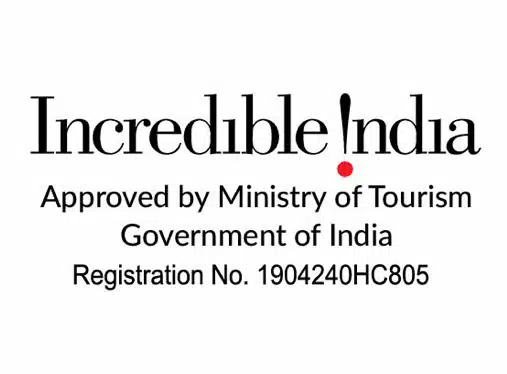The African continent offers a wide array of scenic landscapes and a vast wilderness area, perfect for avid hikers and trekkers. Hiking in Africa is one of the most unique ways to experience its flora and fauna as well as witness the natural beauty of its mountains. While the continent is huge and has gorgeous canyons, volcanoes, gorges, and sea-side mountain ranges all over, there is one that should be at the top of your list.

The stunning Mount Kenya
Mount Kenya, the second tallest mountain in Africa after Mount Kilimanjaro, is the most famous attraction in Kenya. This mountain is located in equatorial Africa and stands at a spectacular height of 17,057 feet, or 5,199 metres. The Great Rift Valley outset created this ancient dormant volcano nearly 3 million years ago. The mountain, covered with ice for thousands of years, resulted in eroded slopes and several valleys.
Often overlooked by Kilimanjaro, trekkers and hikers alike are finally paying attention to the beautiful Mount Kenya and all it has to offer. This glacial peak is home to dense bamboo and rainforest on its lower slopes, which are populated by species of buffalo, monkeys, and leopards. Mount Kenya also has various vegetation bands seen from the base of the peak and rare Afro-Alpine moorland and plant life at higher elevations.

Hiking at Mount Kenya
Witnessing thriving wildlife, mountain lakes, forested slopes, dramatic panoramic views, and a more off-beaten path than other ranges, Mount Kenya is an important climb in its own right. Mount Kenya also holds a deep cultural value for the Kenyan tribes, who believe that the mountain is a throne of the Gods.
Opposed to its natural beauty, Mount Kenya is more challenging to hike, known for being extremely steep and having high altitudes. For a successful and rewarding hiking experience, choosing the right path is essential. Casual hikers as well as professionals find Mount Kenya’s different peaks best suited for them.
Here is everything you need to know about hiking in Mount Kenya
How to get to Mount Kenya?
Mount Kenya is located approximately 180 kilometres away from Nairobi. Depending on the route, you can either hire a private car or ride a train or matatus (privately owned minibusses) to Nanyuki or Naro Moro. Those opting for air travel can fly into Jomo Kenyatta (JMO), Nairobi’s international airport. From the airport, the starting point for the hike becomes accessible via private transfer or a bus.
What are the three main summits of Mount Kenya?
The three main peaks of Mount Kenya range from casual hikes to intermediate-level trekking and even highly technical climbs:
- Batian: It is the highest peak of Mount Kenya, towering at 5,199 metres, or 17,057 feet, in elevation. Batian is the main summit, best suited for advanced rock climbers and mountaineering enthusiasts. The summit climb usually takes 11 to 13 hours to complete. It is very important to have good acclimatisation, fitness, and the correct technical gear to hike Batian.

Batian Summit
- Nelion: Batian’s slightly smaller twin peak, Nelion, stands at 5,188 metres, or 17,021 feet. Nelion proves to be a challenging climb that requires experience with multi-pitch rock climbing. The climb to Nelion takes between 6-9 hours to complete. A hike at this summit serves as a great warm-up for those attempting to climb the Batian later.

The highest hut on Mount Kenya – Austrian Hut
- Point Lenana: The third summit is Point Lenana, which is also the lowest summit and rises at 4,985 metres, or 16,354 feet, in elevation. Unarguably, it is the most popular peak for hikers because it does not require any technical climbing skills to reach the summit. However, it does require excellent physical fitness to hike.
What are the Mount Kenya climbing routes?
There are five main routes that reach Point Lenana on Mount Kenya. To enjoy an adventurous hike, it is common to combine and choose different trails. Not only can you save time through this, but it also helps you witness the diverse scenery and vistas surrounding the mountain. Even if you wish to climb Batian and Nelion, you will need to reach Point Lenana first.
Here are the five major routes that you can take while hiking Mount Kenya:
- Naro Moru
Naro Moru is known to be the shortest and most direct route of all. Due to this reason, it tends to be frequented more by tourists. While it may not be scenic, Naro Moru is relatively cheaper than others. It is best suited for a great ascent and descent route.

Sunrise on top of Mount Kenya
Yet, Naro Moru is more challenging as it has a steep section, the Vertical Bog, which is a marshy area that gets waterlogged during the rainy season. The plant life here is incredible, and the route passes through the open Teleki Valley and displays a striking view of the Tyndall Glacier. This trail can be done in one long day, but it is recommended over two days and one night.
- Sirimon
Sirimon is a scenic route that stretches a little longer than Naro Moru. It is also the most famous ascent, as the altitude gain is steady. It takes hikers through a beautiful valley and passes wildlife-filled yellowwood forests, which give direct access to moorland.

Shipton’s camp at Sirimon route
This route offers the best hike for those who do not have much experience with high-altitude mountains. Moreover, as Sirimon is protected from rainfall, the track remains dry. There are two camps on this route: the Old Moses and Shipton camps, which allow hikers to rest and recharge before resuming the climb. The hike starts at Nanyuki and takes a minimum of two days to complete.
- Chogoria
The dramatic Chogoria route is well-known for its spectacular surroundings and is much longer than most common routes. It starts in Chogoria town and begins 20 miles from the park gate. Hikers find themselves walking through a forest filled with beautiful fauna, where they can sight a few wild animals. The route also passes through waterfalls and tarns.

The Gorges Valley seen at Chogoria route
Moreover, the Chogoria route provides views of the scenic Lake Michaelson from the ‘Temple’, which is a sheer cliff. Hikers can also enjoy long walks along the Gorges Valley. This hike is typically completed in five days.
- Burguret
The Burguret route is a more challenging route where one can experience a wild trek to reach Point Lenana. There are far fewer hikers on this route than elsewhere due to the paths being overgrown and having dense vegetation.

A gorgeous view from Point Lenana
This trail takes hikers through a few tropical rainforests at the start of the climb. Hikers need to stay in the wilderness huts at night along the route. The Burguret route is also challenging, as it is often muddy and rough to climb. The trail takes a minimum of three nights and is commonly combined with a different trail to descend.
- Timau
The Timau route is very rarely used as it is older and does not have any facilities along the way or places to stay overnight.
Other routes
There are two main routes that require advanced technical climbing. These routes help to reach Batian and Nelion, some of the best technical alpine peaks in the world.
The Normal route, which is South Ridge to Nelion, is located on the southern side of Mount Kenya. The south face of the mountain offers impressive and breathtaking views. The route requires at least 8 hours to complete and has around 18 pitches. Only those who have previous experience can opt for the normal route, which is a heavily technical climb.
The North Face Standard Route, which is the north face of Batian, is an advanced climbing route. It has the most direct access to the highest point of Mount Kenya and passes along the northern side. This challenging climb is for advanced climbers, taking around 12 hours to ascent and an additional five hours to descend after an overnight camp.
What is the best time to hike Mount Kenya?
Mount Kenya sits directly on the equator and generally remains warm and sunny during the day, while temperatures substantially drop at night. Although one can take a hiking trip to the mountain all year round, the best time to visit typically depends on personal preference and weather conditions.

Mount Kenya Summit Circuit
The dry season occurs from December to March and sometimes even from July to September. Since there are very few chances of precipitation during these months, it is the best time to hike Mount Kenya. One must avoid rainy seasons between Mid-March and June, as well as from October to December.
You should undertake the Normal Route between December and March, while you trek the North Face Standard Route from July to September. Although the temperatures at Mount Kenya are constant throughout the year, they do change significantly during ascent, when day temperatures range from 15 °C to 5 °C while night temperatures drop below freezing.
What is the fitness level required to climb Mount Kenya?

The trekking or hiking routes up to Point Lenana do not require anyone to be a professional mountaineer. But one needs to have hiking experience prior to climbing the mountain. You also need to have good overall fitness. For Nelion and Batian peaks, one needs to be in excellent climbing shape and have good strength as well as stamina.
Hikers can also face altitude sickness, or AMS (Acute Mountain Sickness) while reaching the summit. Keeping oneself hydrated properly and acclimatising to the thin air can minimise the common symptoms, which are headaches and nausea. Hikers must fully inform themselves about AMS as well as other illnesses that may occur before climbing Mount Kenya.
What should you carry while hiking Mount Kenya?
Along with personal items, proper clothing is of utmost importance. Opt for long or short sleeve moisture-wicking fabric shirts, a warm fleece top, a hardshell jacket, a lightweight poncho, hiking or waterproof trousers, a hat, gloves, mittens, hiking boots, and thick wool socks for the night.
You should also carry a warm sleeping bag, rucksack, duffle bag, sunglasses, water bottles, toiletries, first aid supplies, and other essential items. Before you start hiking, refer to your personal guide and follow all that they advise.
Hiking Mount Kenya and enjoying the exceptional views of the African savannah from the top of the summit is a dream come true. Refer to this guide when you think you are ready to take on the mighty peak!
If you loved reading this story, then subscribe to our blog here (it will ask to verify your email) to get inspiring travel stories and trivia delivered to your email. Stories about wildlife trivia, cultural experiences, curated luxury hotel lists, underrated places to travel, polar journeys and much more.











